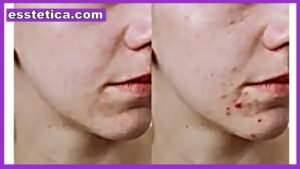Managing Period-Related Acne: Hormonal Flare-Ups Explained
Acne flaring before your period is incredibly common, and it all boils down to hormonal shifts during the luteal phase—the roughly week-long window before menstruation. During this time, oil production spikes, pores clog more easily, and inflammation intensifies. The right skincare can make a huge difference by controlling oil, exfoliating effectively, and calming irritation.
Key Active Ingredients for Period Acne
Dermatologists often recommend targeted ingredients that address the root causes of cyclical breakouts. Here’s a breakdown of the most effective actives and their best uses:
1. Salicylic Acid (BHA – Beta Hydroxy Acid)
Why it works: Salicylic acid is oil-soluble, allowing it to penetrate deep into pores. It dissolves the mixture of dead skin cells and excess sebum that creates clogs, making it a cornerstone of prevention and treatment.
Best forms: Cleansers, toners, and spot treatments, typically in concentrations of 0.5%–2%.
2. Benzoyl Peroxide
Why it works: A powerful antimicrobial, benzoyl peroxide kills P. acnes bacteria that thrive in oily, clogged pores. It also helps shed dead skin cells, reducing the chance of inflamed pimples.
Best forms: Cleansers (can be used as short-contact masks) and spot treatments, usually 2.5%–10%. Caution: Can bleach fabrics—apply carefully.
3. Retinoids (Adapalene, Retinol)
Why it works: Retinoids are the gold standard for acne prevention. They normalize skin cell turnover, stopping clogs before they form deep in the pore. Adapalene is OTC and highly effective.
Best forms: Nighttime serums or gels. Start slowly—2–3 nights per week—to reduce dryness or irritation.
4. Niacinamide (Vitamin B3)
Why it works: Niacinamide regulates sebum overproduction, which surges during the luteal phase. It also soothes inflammation and redness, making breakouts less noticeable.
Best forms: Lightweight serums or moisturizers, generally 4%–10% concentration.
5. Azelaic Acid
Why it works: Azelaic acid combines gentle exfoliation with antibacterial and anti-inflammatory effects. It’s especially good for fading post-inflammatory marks left by pimples, without the irritation of stronger actives.
Best forms: Gels, creams, or serums (available OTC and by prescription).

Skincare Strategy by Cycle Phase
Many people find success with cycle-synced skincare, adjusting their routine to match hormonal changes:
| Phase | Skin Priority | Recommended Ingredients/Products |
|---|---|---|
| Follicular & Ovulation (Days ~6–14) | Maintenance & hydration | Gentle cleanser, hydrating moisturizer, Vitamin C for a healthy glow. Skin is typically clearest and can handle stronger actives. |
| Early Luteal (Days ~15–22) | Prevention & oil control | Niacinamide and Salicylic Acid toner/serum a few nights per week to preempt clogged pores. |
| Late Luteal (Days ~23–28 / Period Start) | Spot treatment & calming | Benzoyl Peroxide as a spot treatment or Azelaic Acid serum on affected areas. Optional clay mask 1–2 times per week to absorb excess oil. |
| Menstrual (Days ~1–5) | Barrier repair & soothing | Hydrating ingredients like Hyaluronic Acid and Ceramides. Avoid harsh exfoliants—skin may be sensitive or dry. |
When to Seek Professional Help
If OTC products fail after 2–3 cycles, your acne might be moderate to severe or cystic. In these cases, a dermatologist may suggest:
-
Topical Prescription Retinoids: Stronger formulas like tretinoin.
-
Oral Medications:
-
Anti-Androgens (Spironolactone): Reduce the impact of male hormones that boost oil production.
-
Combined Oral Contraceptives: Regulate hormonal fluctuations driving acne.
-
Oral Antibiotics: For severe inflammation and bacterial control.
-
Cycle-Synced Skincare: Protecting Your Skin Throughout Your Menstrual Cycle
Hormonal fluctuations during your menstrual cycle affect oil production, hydration, sensitivity, and overall skin resilience. By “cycle syncing” your skincare, you can anticipate these changes and tailor your routine to maintain healthy, balanced skin.
1. Menstruation Phase (Days 1–5: Low Hormones)
During this phase, estrogen and progesterone are at their lowest, often leaving skin dry, sensitive, and prone to irritation. The skin barrier can feel compromised, and redness may appear more easily.
Focus: Hydrate and Soothe
Do:
-
Use a gentle, hydrating cleanser such as a cream or milk cleanser.
-
Prioritize barrier-repairing ingredients: Ceramides, Hyaluronic Acid, Glycerin.
-
Apply a richer moisturizer or a facial oil at night to lock in moisture.
-
Incorporate anti-inflammatory, soothing agents like Niacinamide (Vitamin B3) or Aloe Vera.
Avoid:
-
Harsh physical scrubs.
-
Strong chemical exfoliants (high-dose AHAs/BHAs).
-
Introducing new active products that may provoke irritation.
2. Follicular Phase (Days 6–14: Rising Estrogen)
As estrogen rises, your skin becomes smoother, plumper, and more resilient. Collagen production and hydration improve, making this the ideal window for reviving active ingredients and brightening routines.
Focus: Exfoliate and Brighten
Do:
-
Reintroduce chemical exfoliation (e.g., Glycolic Acid, Lactic Acid – AHAs) to maintain smooth, even skin texture.
-
Use Vitamin C in the morning to boost radiance and antioxidant protection.
-
Consider trying new products or treatments—your skin is less reactive and more forgiving.
Tip: This phase is perfect for preventive treatments, ensuring your skin remains clear and balanced before progesterone peaks.
3. Luteal Phase (Days 15–28: Rising Progesterone)
With progesterone surging, sebaceous glands ramp up sebum production. This is the phase most prone to breakouts, clogged pores, and inflammation, especially along the chin and jawline.
Focus: Oil Control and Acne Prevention
Do:
-
Switch to a lightweight, non-comedogenic moisturizer.
-
Cleanse carefully, emphasizing oil-control products.
-
Introduce Salicylic Acid (BHA) through a cleanser or toner to penetrate pores and dissolve clogs.
-
Use clay masks 1–2 times per week to absorb excess oil and detoxify pores.
-
Keep Benzoyl Peroxide spot treatments handy for inflamed pimples.
Avoid:
-
Heavy, occlusive creams.
-
Thick, oil-based makeup that may worsen clogged pores.
Overall Protection Tips (All Phases)
-
Wear SPF Daily: Sunscreen prevents hyperpigmentation and protects acne-prone skin from post-inflammatory dark marks.
-
Maintain Hygiene: Change pillowcases regularly and cleanse your face after workouts, particularly during oilier phases.
-
Diet & Stress Management: Minimize high-glycemic foods and excessive dairy. Adequate sleep and stress-reducing practices (yoga, meditation) support hormonal balance and skin health.
🏆 Struggling with acne? Discover the 2 natural solutions I personally recommend:
👉Get Ninja Health Now — Launch Your Health Site in 60 Seconds
YOU MAY ALSO LIKE:
Natural Remedies for Pregnancy Acne: Safe Ways to Soothe Hormonal Breakouts






